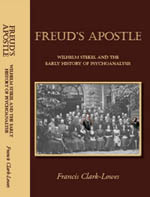The explosion of Israeli media interest in my walk may have helped me gain a place as a volunteer on a kibbutz. But if Arab countries were to know that I’d been in Israel this might create problems.
Reading through my diary entries for this period I am struck by how much I already knew about the Israel-Palestine conflict. While walking across Israeli-occupied northern Sinai, I conceived a still unrealised project to write a book presenting the conflict in the form of parables.
On Christmas Eve I walked with some friends to Bethlehem across the Shepherds’ Fields, where ‘the wall’ now stands, to see the Patriarch of Jerusalem arrive there for the annual celebrations. Christmas was spent with Rina, Secretary of Neve Shalom/Wahat As-Salam, a community and school bringing people on different sides of the conflict together.
My priority was now to find somewhere to live where Angie could join me. Givat Brenner, near Rehovot, is among the largest kibbutzim in Israel, with a population of around 1700. I guess the story of my walk turned matters in my favour with Shimon, the volunteer manager. Soon I was earning my keep picking grapefruit or cleaning the refectory floor, and – stretching the rules a bit – I had a room I could share with Angie. At Ben Gurion airport on 18th January I saw this petite twenty-one year old emerge from her first flight, with a heavily laden rucksack and surrounded by UN soldiers. There now was no going back.
We enjoyed our time at Givat Brenner, and the friends we made there, but this didn’t feel like the Middle East. I therefore decided to continue my walk to Cairo, that is up to the UN buffer zone, 93 km from the Suez Canal, and then on the other side, from the Suez Canal to Cairo. The route from Bethlehem, through Beit Jala, Ashdod, Askelon, Gaza City, Khan Younis, Rafa and El-Arish to the UN zone was done while I was still living at Givat Brenner.
In those days the Green Line between the occupied territories and Israel was unmarked. But you knew you had crossed it by the dramatic change in the character of the country. On the one side there were villages, lots of people, donkeys, goats and invitations to drink tea. On the other there were irrigated fields, no people and an occasional modern house. I found the same contrast in my political outlook. When I was with Palestinians I was entirely on their side; when I was with Jews, their story, related to us at kibbutz meetings, also seemed reasonable.
We left Haifa for Cyprus on 1st April, and it was in Nicosia that I popped the question. We had intended to sail straight on to Egypt, but a further detour to Athens was required to get Angie’s passport, bearing an Israeli entry stamp, changed. At last we sailed into Alexandria, where we stayed with friends, before decamping to another friend’s flat in Cairo.
We were pretending not to be in Cairo, because the route from the Suez Canal to Cairo remained to be walked. Having got to Al-Qantara we followed the canal to Ismailia in searing heat and pestered by flies. The next day I walked on alone to Tel el-Kabir, the town where the British defeated the Egyptians in 1882. Was it their revenge that I was arrested there as an Israeli spy? After much waiting and interrogation, I was escorted back to Ismailia by a diminutive junior policeman called Mohammed Ali. His idea of guarding me was to hold my hand, and in parting, at Ismailia police station, he said: ‘You’ll soon forget me.’ But I never have!
Angie was, of course, very anxious by the time I got back to the hotel late at night, under police arrest. The next day we were escorted back to the police station, where everything was sweetness and light, and we were soon free to leave. I completed the walk to my final destination in two day trips from Cairo. At last on 15th May I looked down from the Citadel (which my father commanded for a day during the war), across the great sprawling city of Cairo to the pyramids of Giza. I had made it!

